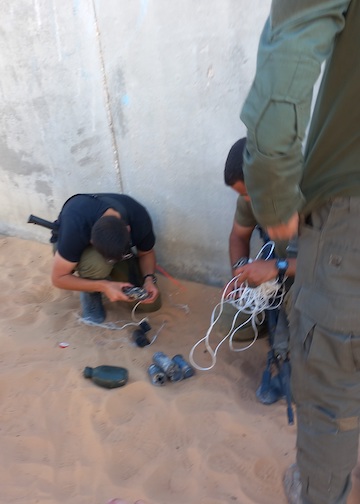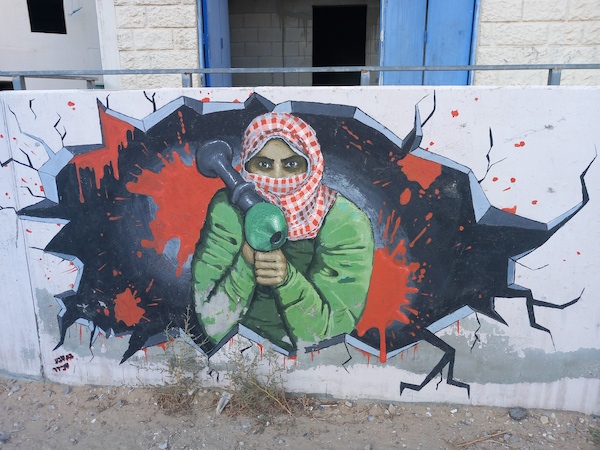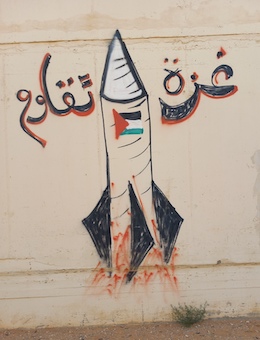An Israel Defence Forces patrol. The mural on the right was painted by Batsheva Schneider when she was doing her military service. (photo by Gil Zohar)
Fans of Fauda may recognize the Tze’elim Urban Warfare Training Centre (UWTC) in the western Negev Desert near Kibbutz Tze’elim. The base – where Israel Defence Forces infantry and commanders train in the type of house-to-house and subterranean combat expected in the Gaza Strip, but also in the West Bank, southern Lebanon and other Middle East locations – was used as a set for the hit TV series. But, while faudameans “chaos” in Arabic, the disarray in this sprawling 24-hectare base has been finely calibrated to accustom troops to real-life conditions of fighting in Arab cities and villages.

Located inside the larger Tze’elim Training Base, the UWTC simulates the maze of a multi-storey Middle Eastern urban environment. Established in 2005, it was built at a cost of $45 million.
The warren of 600 structures includes garbage-strewn streets, storefronts, schools, houses, shacks, an eight-storey apartment block and mosques. The muezzin’s call blares from the minarets, which are illuminated with green Islamic lights. Garages advertise cars for sale. Jeeps patrol the dusty streets. Holes blown in walls allow soldiers to avoid entering a building via the doorway, which may have been booby-trapped.
Most striking are the murals and graffiti scattered across the site, some painted by Batsheva Schneider when she was doing her military service. The images include Islamic Jihad fighters firing RPGs, Hamas founder Sheikh Ahmad Yassin, Qassam rockets from Gaza, and guerrillas with their faces covered by a keffiyah scarf marked “shahid” (martyr). One Arabic sign just says “death.”

Entering a mock-up of a claustrophobic Gaza terrorist tunnel, this writer felt the palpable panic among my fellow journalists behind me as they urged me forward in the pitch-black darkness.

Other buildings are decorated to replicate a salon in a private home. The verisimilitude extends down to framed family photographs, flowers in a vase, recent newspapers from Gaza and art with Quranic verses. Simulators showing mortar strikes and explosions suggest to soldiers what they might witness outside the living room window.
In addition to the IDF, Israel’s “Mini Gaza” has been used for urban warfare training by U.S. Army soldiers and United Nations peacekeepers. The project was developed to meet the need for better urban warfare training by the IDF, as a response to the challenges of the Second Intifada of 2000-2005. It is regularly updated as new terror strategies evolve.
Training exercises here are meant to help soldiers and their officers distinguish between combatants and civilians, and prepare them for situations where terrorists exploit civilians as human shields.
This writer was part of a delegation of international journalists on a tour organized by the Israel Government Press Office. The invitation came before the recent military operation in Jenin.
Gil Zohar is a writer and tour guide in Jerusalem.

